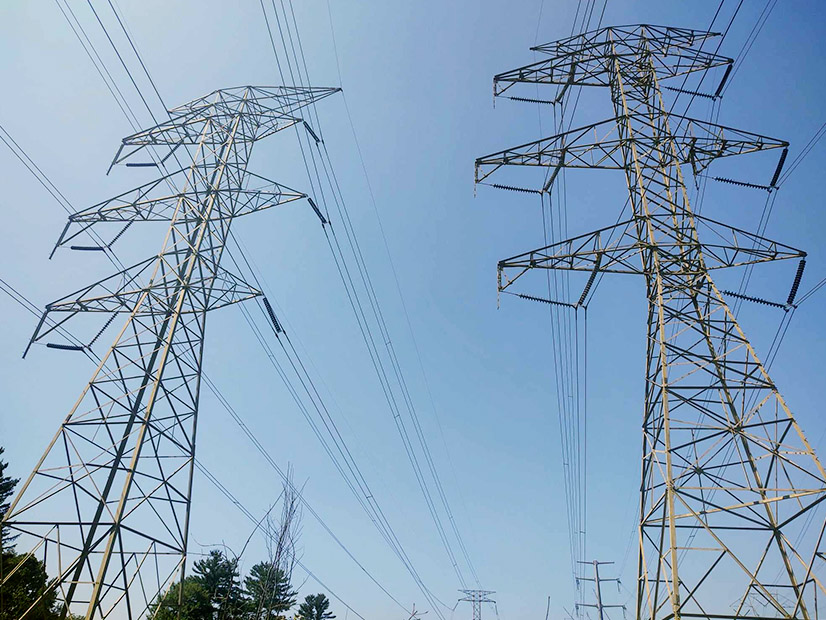A coalition of transmission, utility and consumer advocates on March 6 recommended that FERC incorporate cost management protocols into its final rule on transmission planning and cost allocation (RM21-17).
The group — which includes the Electricity Consumers Resource Council (ELCON), the Large Public Power Council (LPPC), Americans for a Clean Energy Grid (ACEG), the Clean Energy Buyers Association (CEBA) and the National Association of State Utility Consumer Advocates — hosted a webinar to endorse a proposal requiring that transmission providers incorporate cost-benefit reporting mechanisms throughout their projects’ lifecycles.
It urged FERC to mandate that providers periodically file cost allocation reports tracking anticipated project costs against initial projections. Under the proposal, if a provider’s publicly filed report reveals that a project’s costs have either exceeded a predefined threshold percentage of its original projected cost or fallen below an approved benefit-cost ratio, a process administered by an RTO or ISO would be initiated to reconsider the project’s cost allocation to prevent consumers from bearing undue financial burdens.
“Instilling greater transparency and cost discipline in transmission development protects consumers from undue costs and provides assurances that consumers will benefit throughout the life of the project,” ELCON CEO Karen Onaran said in a press release.
John Di Stasio, president of LPPC, said the proposed provisions would ensure that transmission projects approved through the regional planning processes undergo “a cost-benefit analysis not just at the outset, but [also] throughout the life of construction, because at the end of the day, consumers are the ones who bear the cost of new infrastructure, and we want to make sure there is oversight on their behalf.”
The group proposes that FERC’s final rule establish a reconsideration threshold at 25% or more above the projected cost allocation. This reconsideration process would allow project sponsors to justify their cost deviations and present mitigation plans, until construction.
“This rule would require planners to take a long-term look at the changing circumstances and plan for all economic or reliability benefits and adopt some sort of backstop or dispute resolution for cost allocation,” said Christina Hayes, executive director for ACEG.
“We’re no longer just talking about an energy transition, but we’re talking about a grid expansion,” said Bryn Baker, senior director of CEBA. “And this grid expansion means that we cannot just be talking about adding new generation, but we have to talk about moving the cheapest available electrons to where they’re needed.”
The commission issued a Notice of Proposed Rulemaking last year to change how transmission planning and cost allocation processes are conducted to help build out the grid in the long term. The docket has received a barrage of comments, reports and appeals from industry groups, politicians and transmission stakeholders urging that FERC’s final rule should allow for regional flexibility; not hinder ongoing innovation; consider factors related to competition, consumers and transparency; and be issued by year-end, among other recommendations. (See FERC Gets Dueling Competition Studies in Transmission NOPR Docket.)
“Striking a balance between advancing clean energy goals and protecting consumers from unforeseen costs is essential as FERC considers large-scale regional transmission planning,” Di Stasio said.
During the webinar a reporter asked how the group arrived at the 25% reconsideration threshold and if it could unreasonably slow down project approvals.
Di Stasio replied that the group has discussed with FERC how “these protocols could create a barrier” but added that “if it’s clear at the outset and there’s ongoing monitoring and recording, it still gives an opportunity for projects to continue” and “[the threshold] shouldn’t necessarily slow anything down and, in fact, gives us greater confidence in whatever gets approved.”
Hayes added that “this proposal makes sure that we’re very clear-eyed about the costs and benefits as we go through planning and makes sure that, should things go awry, there’s a check in that process.”
The 25% figure is “not necessarily a line drawn hard in the sand,” Baker concluded. “But the point of the entire exercise is to say if costs have increased that much, let’s just have a quick check.”


